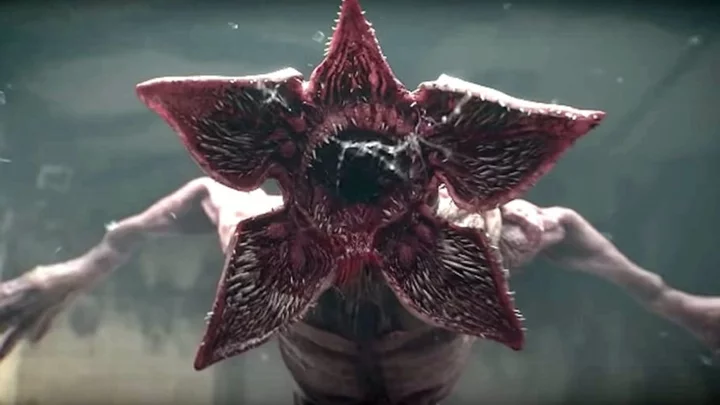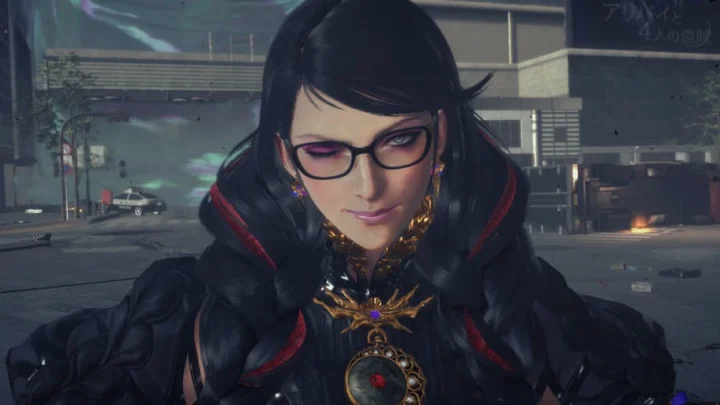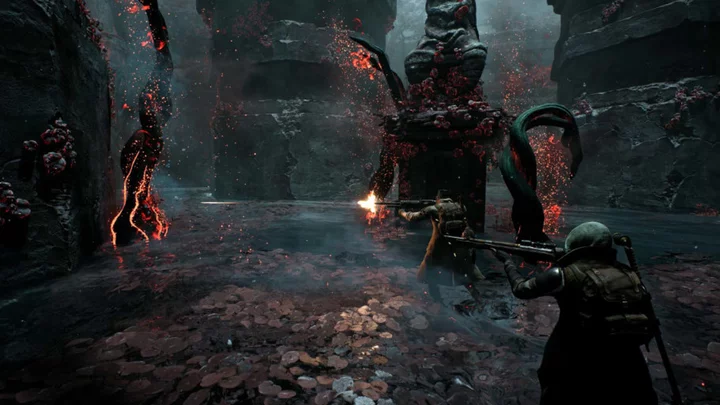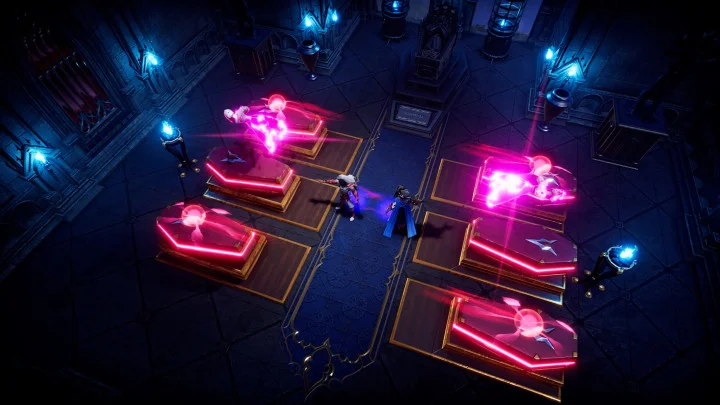In the first episode of Netflix’s hit series Stranger Things, four boys—Dustin, Lucas, Will, and Mike—are sitting around a basement table playing a spirited game of Dungeons & Dragons. It’s nighttime, and a sense of foreboding hangs over the scene, established by the show’s opening just seconds before when a lab worker fell victim to an unseen creature chasing him down the corridors of a mysterious government facility.
Suddenly, Mike, the Dungeon Master, reveals the mother of all D&D monsters—the one most feared by the other players.
“The Demogorgon!“ Mike yells as he slams the game piece down.
As fans of the show well know, the Demogorgon is more than just a formidable foe from a popular role-playing game. It’s also the name the boys give the creature that breaks out of the Upside Down realm, abducts Will, and terrorizes the small town of Hawkins, Indiana. Moreover, it’s a symbol of unspeakable evil, a shorthand for the chaos that visits the otherwise predictable lives of this Anywhereville, USA.
That evil has a long history behind it. Indeed, Stranger Things is only the latest in a collection of novels, epic poems, and other works stretching back centuries that reference the terrifying name.
Beginning in the Middle Ages, the Demogorgon was characterized as a powerful, primordial demon. In Paradise Lost, John Milton’s 1667 epic poem about the fall of man, Demogorgon is “the dreaded name,“ and in Milton’s earlier Prolusion 1, Demogorgon is explained as the ancestor of all the gods in ancient mythology. In Christopher Marlowe’s Doctor Faustus, written circa 1590, the title character invokes the name of Demogorgon while calling upon the demon Mephistopheles. Edmund Spenser, in his allegorical poem The Faerie Queene, describes Demogorgon as one of the rulers of hell, residing “Downe in the bottome of the deepe Abysse … Farre from the view of the Gods and heauens blis,“ while in Moby-Dick, Starbuck refers to the white whale as “demigorgon“ to the Pequod’s heathen crew. Fast forward more than 100 years, and Hunter S. Thompson is name-checking the Demogorgon in The Rum Diary.
But the Demogorgon’s starring role came in 1820, in Percy Bysshe Shelley’s Prometheus Unbound, in which it overthrows Jupiter, king of the gods, and frees the title character from 3000 years of torture. The Romantic poet imagined the Demogorgon not as a creature, but as a dark, shapeless god residing in a cave deep in the underworld.
I see a mighty darkness
Filling the seat of power, and rays of gloom
Dart round, as light from the meridian sun,
Ungazed upon and shapeless; neither limb,
Nor form, nor outline; yet we feel it is
A living Spirit.
So powerful was the Demogorgon that it transcended physical form and, like a Medieval Voldemort, was too terrible a name to say or spell out.
With Dungeons & Dragons, the monster finally took shape: Standing 18 feet tall, it had a scaly, reptilian body, tentacle arms, and two giant baboon heads. It could charm, hypnotize, drain away life force, or make you deadly ill. It was called “The Prince of Demons.“ Truly, chaos was its calling card.
In Stranger Things, the Demogorgon became something different—a dark, twisted creature resembling a cross between a werewolf and a Venus flytrap. A general of hell? Lord of the underworld? Maybe not. But with its otherworldly menace and point of origin—a dusky, alternate plane where tiny particles swirl about like falling snow—the creature is every bit vintage Demogorgon.
So who created the Demogorgon? The oldest known mention comes from, of all things, an ancient typo. In a 5th century commentary on an epic by the Roman poet Statius, the Christian scholar Lactantius Placidus referenced “Demogorgon, the supreme god, whose name it is not permitted to know.“ Sounds scary, but scholars today believe Placidus’s “Demogorgon“ was a misconstruction of the Greek word for demiurge, the creator of the physical world. The name conjured up the Gorgons of Greek mythology—the three sisters with snakes for hair, Medusa being the most famous—and stoked the imaginations of future writers. In the 14th century, the Italian author Giovanni Boccaccio included the Demogorgon in his genealogy of mythical creatures, the Genealogia deorum gentilium, thus securing its place in the cultural lexicon.
A name, of course, is just that. What’s more important is what a name signifies, which in this case seems to be a fear of the unknown, a fascination with realms beyond. Stranger Things may be a love letter to the ’80s, but its marauding demon carries on a timeless tradition. Long live the Demogorgon.
A version of this story ran in 2016; it has been updated for 2023.
This article was originally published on www.mentalfloss.com as The Otherworldly History of the Demogorgon.









